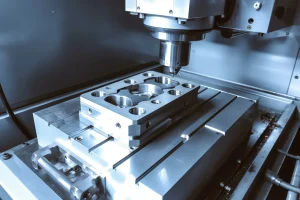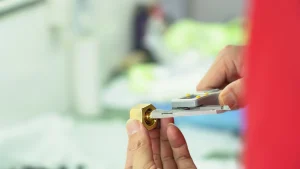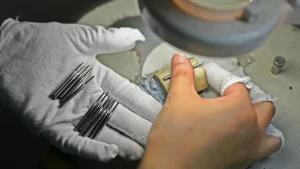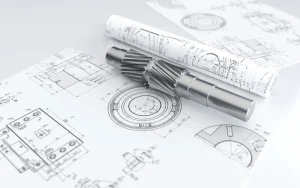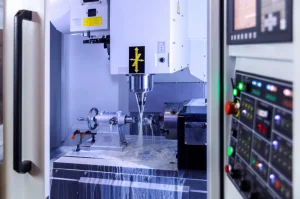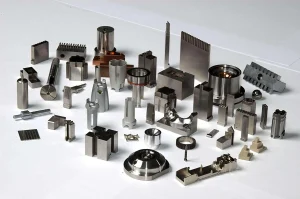Precision components in the aviation and aerospace industries have extremely high requirements. This is partly due to the specific requirements of aviation equipment, and partly due to the unique aerospace environment. Therefore, standard materials on the market cannot meet these requirements, necessitating the use of specialized materials. Titanium alloys are a common material in the industry, especially in aerospace, where they are commonplace.
Why is this material so widely used? This is actually related to the properties of titanium alloys. Titanium alloys have a low specific gravity, resulting in a relatively low mass. Their high strength and thermal strength give them excellent hardness and temperature resistance. Their mechanical properties, such as salt and alkali resistance and corrosion resistance, are also outstanding, making titanium alloy parts suitable for use in all conditions. Furthermore, titanium alloy components have a very low coefficient of deformation. This is why they are widely used in industries such as aviation, aerospace, chemical engineering, petroleum, and shipbuilding.
Cutting Characteristics of Titanium Alloys
Because titanium alloys have a relatively low coefficient of deformation and the cutting temperature is relatively high, the stress on the tool tip is relatively high, leading to severe work hardening. This can easily lead to tool wear and chipping during cutting. When cutting titanium alloys, cutting forces are relatively high, and work hardening can occur easily, making it more challenging to achieve a good surface finish. However, titanium alloys have low thermal conductivity, resulting in high cutting temperatures and significant tool wear, which significantly shortens tool life.
Tungsten-cobalt carbide tools with small grains, such as YG8 and YG3, should be selected, as they have low chemical affinity with titanium, high thermal conductivity, and high strength. Chip breaking is a challenge when turning titanium alloys, especially when machining pure titanium. To achieve chip breaking, the cutting edge can be ground into a fully curved chip flute, shallow in the front and deep in the back. This allows chips to be easily expelled, preventing them from wrapping around the part and causing scratches on the surface.
Titanium alloy cutting has a low deformation coefficient, a small contact area between the tool and the chip, and high cutting temperatures. To reduce cutting heat generation, a small rake angle is recommended for turning tools. Carbide turning tools generally have a rake angle of 5–8 degrees. Due to the high hardness of titanium alloy, a large clearance angle is recommended to increase the tool’s impact resistance, generally around 5 degrees. To strengthen the tool tip and improve the tool’s impact resistance in high-temperature cutting conditions, a large negative rake angle is used.
Reasonably control the cutting speed, avoiding excessive speed. Use titanium-specific cutting coolant during machining to effectively improve tool durability, and select an appropriate feed rate.
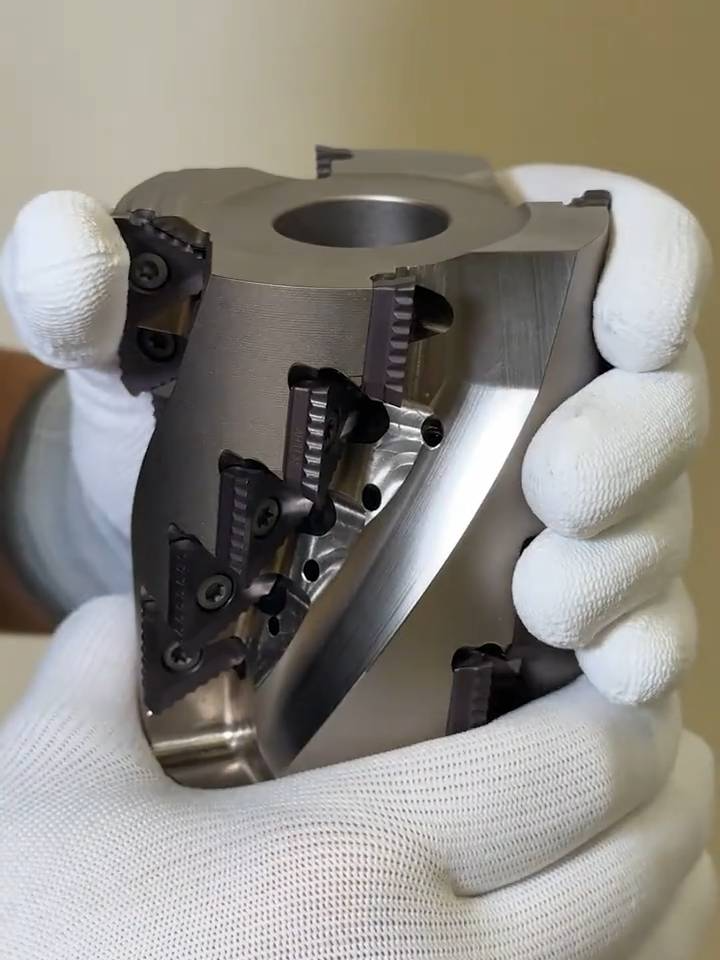
Drilling Titanium Alloy Parts
Drilling is also a common machining method for titanium alloy parts. However, drilling titanium alloys can be challenging, and tool burning and breakage are common. This is primarily due to poor drill sharpening and inadequate chip removal. Poor cooling and weak process system rigidity can also contribute to this problem.
This depends on the drill bit’s diameter. Grind the chisel edge narrower, typically to a width of 0.5 mm, to reduce axial force and vibration caused by resistance. Also, narrow the land area to approximately 0.5 mm, 5–8 mm from the tip of the drill bit, to facilitate chip removal.
The geometry must be correctly sharpened, and both cutting edges must be symmetrical. This prevents the drill bit from cutting on only one side, concentrating the cutting force on one side and causing premature wear, slippage, and chipping. Always maintain a sharp edge. When the edge becomes dull, stop drilling immediately and resharpen the drill. Continuing to force cutting with a dull drill bit will quickly burn and anneal due to the high friction and heat, rendering the drill useless. This will also thicken the hardened layer on the component, making subsequent re-drilling more difficult and requiring more frequent sharpening.
Depending on the required drilling depth, the drill bit should be shortened and the core thickness increased to increase rigidity and prevent chipping due to vibration during drilling. A φ15 mm drill bit with a length of 150 mm has been shown to have a longer service life than a φ15 mm drill bit with a length of 195 mm, so the correct length is crucial.
Summary
As demonstrated by the common machining methods mentioned above, machining titanium alloy parts is relatively challenging. However, with improved processing techniques and tooling, high-quality precision parts can be produced.
These are some machining techniques for titanium alloy aviation parts, which we hope will be helpful.
About RapidEfficient
RapidEfficient specializes in high-precision CNC machining with 18 years of experience. Its products cover medical, communications, optics, drones, intelligent robots, automotive, and office automation parts.
The company’s CNC machining centers include four-axis, five-axis, and linkage machine tools and are equipped with precision projectors, three-coordinate measuring machines, spectrometers, and other precision testing equipment.
Machining accuracy: up to 0.01 mm
Testing accuracy: up to 0.001 mm

